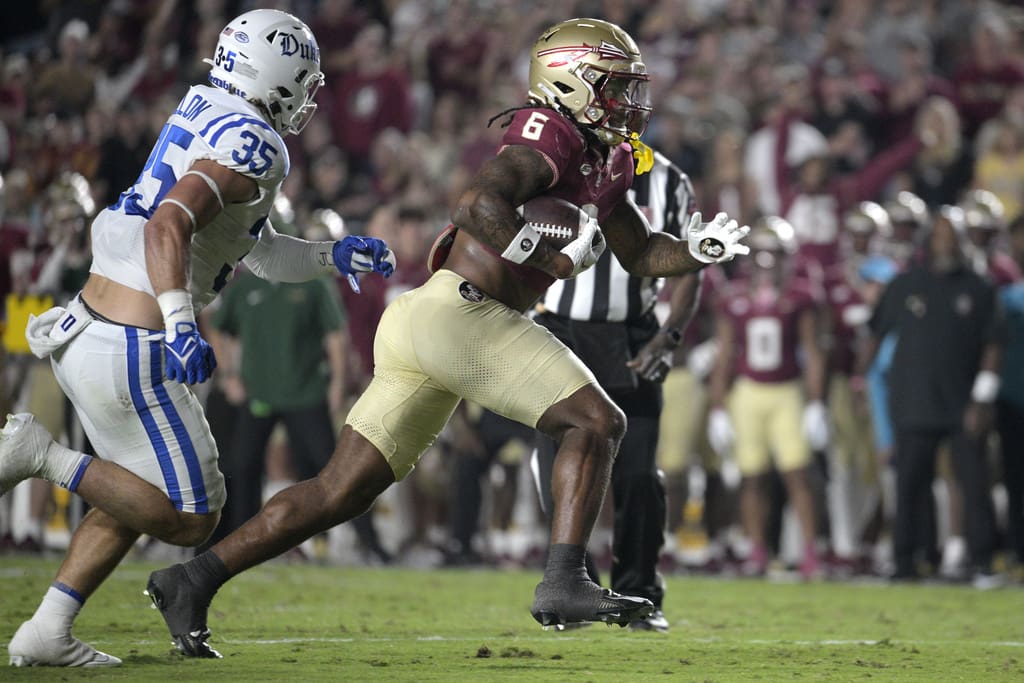Analytics & Analysis
Hockey Analytics: How Good Is Brad Marchand?

How good is Brad Marchand really? He was not a first round pick; he was selected in the third round of The NHL Entry Draft by the Boston Bruins in 2006, so even the team that picked him didn’t see him as a superstar-in-the-making. If the 2006 NHL Entry Draft were redone today, Marchand would be selected in the top five, without question, maybe number one. Imagine the Bruins picking Marchand fifth overall instead of Phil Kessel.
What’s really impressive is his seemingly limitless improvement year-over-year. At age 31, he is defying the laws of the age/performance window, which tells us to expect a steep performance regression starting at age 30. In this respect, he is starting to outclass his 2006 Entry Draft cohort; his comparables are now the younger generational talents, several years his junior.
Not that it matters, but my Top 5 in NHL as I tweet this:
1.) Nathan MacKinnon
2.) Brad Marchand
3.) Leon Draisaitl
4.) Connor McDavid
5.) David Pastrnak#NHLBruins #GoAvsGo #LetsGoOilers@BOSHockeyNow— Jimmy Murphy (@MurphysLaw74) December 10, 2019
At the beginning of this season, Marchand did not make the NHL’s Top 10 Players list, but he did rank 15th on ESPN’s Top 50 list. Most of the players on these lists have something in common too; they all tend to play with exceptional players. This is true in the case of Marchand as well. So, with this in mind, I will try to dig deep into some advanced statistics in an effort to answer the question: How good is Brad Marchand, really?
Brad Marchand Versus Connor McDavid
I’m sure Jimmy Murphy got a lot of heat from Edmonton Oilers’ fans for tweeting a list where Marchand was ahead of McDavid, but this is a good starting point. Let’s take a look at how Marchand compares to McDavid, who most people believe is the undisputed best player in the world.
For this I’ll use a new tool by Waveintel.org called VERSUS PLAYER to compare McDavid and Marchand. The bar indicators show the statistical rate (per 60 mins) relative to all the other forwards in The NHL, in a percent rank format. In other words, the longer the bar, the better the player performance relative to his forward peers.

A look at the basic individual statistics reveals that these players have similar output. What sticks out for me is that Marchand has a higher goal scoring rate of 1.78 goals per 60 mins, and is more selective in his shots with less shots overall and a higher shooting percentage.
Marchand Touches Every Aspect of the Game
When we look at deployment, we can see that Bruce Cassidy uses Marchand in all situations including prime power play minutes and some penalty killing duty. McDavid, David Pastrnak, Nathan McKinnon and Auston Matthews do not kill penalties. Marchand starts in the offensive zone 16.3 times per 60 mins which is less than McDavid but around the same as Matthews and MacKinnon. But Marchand starts in the defensive zone 8.6 times per 60 mins, more often than all those players, including double the rate of Matthews.
Marchand also hits the score sheet in the ‘other’ categories as well, taking a lot of penalties (in the top percent rank of The NHL), hitting more than the average forward, blocking shots and near the top of The NHL in takeaways, but not quite as high as McDavid who is near the top of The NHL with 2.43 takeaways per 60. Marchand draws penalties at a high rate (1.46 per 60 mins) similar to McDavid.
Five-on-Five Play Underlines Marchand’s Value
Now this is where we go a little deeper into the advanced statistics. Relative numbers including shot attempts percentage (or Corsi percentage) and expected goals percentage tells us that when Marchand is on the ice during five-on-five play the Bruins are controlling play by a wide margin. With Marchand on the ice, the Bruins control 54.8% of the shot attempts (near the top of The NHL) and 52.7% of the expect goals share. By contrast, McDavid’s relative numbers are less impressive at 47.1% shot attempts share and 48.8% expected goals share, both below the league average.
Both player’s five-on-five offensive production numbers are impressive but Marchand’s numbers are better which may be a result of a better supporting cast of line mates. This theory is further supported by McDavid’s on-ice five-on-five expected goal rate of 2.65 which is higher than Marchand’s expected goal rate of 2.37 goals per 60 mins, yet the Bruins are scoring at a rediculous 5.09 goals per 60 mins rate with Marchand on the ice, compared to the Edmonton Oilers rate of 3.77 (still amazing!) when McDavid is on the ice.
Last but not least, the defensive side of the five-on-five game can help us understand the ultimate impact of a player. Here we can see that both the Oilers and Bruins perform below league average while McDavid and Marchand are on the ice. This is a normal phenomenon for scoring players; consider their overall impact is excellent as shown in the their goals for and against percentage; McDavid 56.7% and Marchand 67.3% (near the top of The NHL). But, the underlying defensive statistics show us another important distinction between these players; while both players are getting near-average five-on-five save-percentage, Marchand has a superior expected goals against rate of 2.13 goals per 60 mins, which is much better than McDavid’s 2.79 expected goals rate.
 When comparing Marchand to MacKinnon, we can come to a similar conclusion. The offensive contribution is undeniably spectacular, and MacKinnon’s relative numbers are excellent; better than McDavid’s, but Marchand has comparable offensive output with better relative numbers backed by better defensive statistics.
When comparing Marchand to MacKinnon, we can come to a similar conclusion. The offensive contribution is undeniably spectacular, and MacKinnon’s relative numbers are excellent; better than McDavid’s, but Marchand has comparable offensive output with better relative numbers backed by better defensive statistics.
Marchand Is the Most Effective Forward in The NHL
The beautiful thing about The NHL is that everything is debatable. It’s a team sport with so many variables. Statistics, even advanced statistics, don’t tell the whole story. But with that said, it’s hard to argue against Brad Marchand being the most effective forward in The NHL. The eye test matches the statistics. He may not be as flashy or as evidently talented as a Connor McDavid or Nathan MacKinnon, but his effectiveness in all situations is undeniable.



















